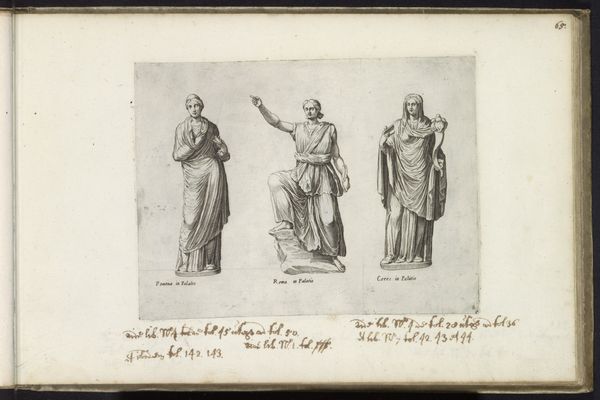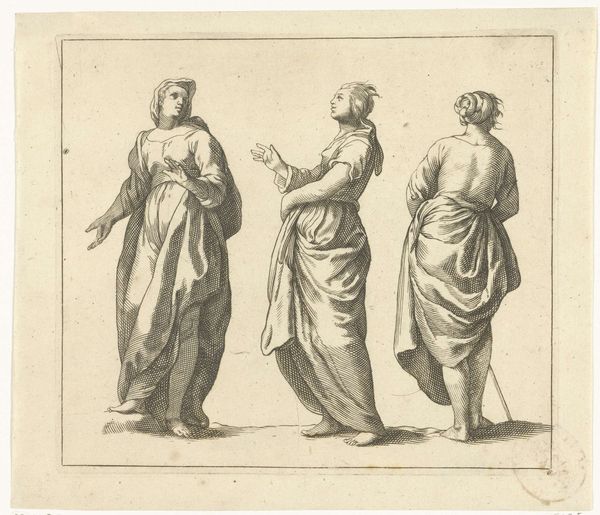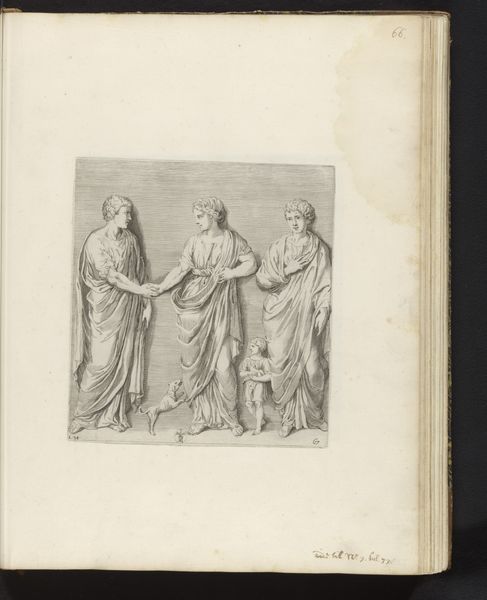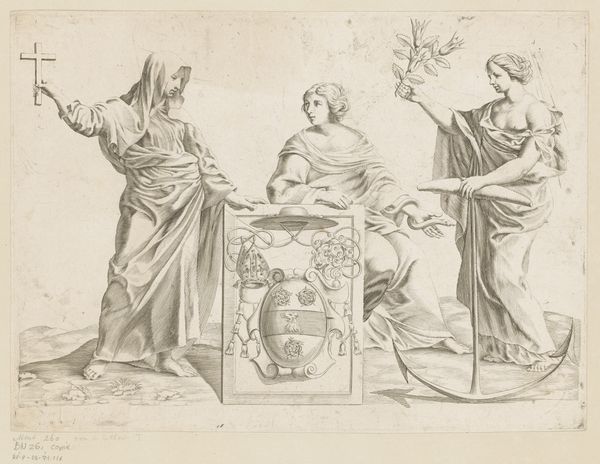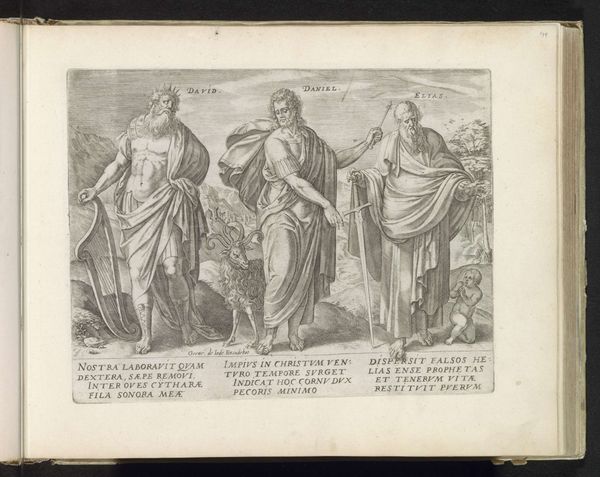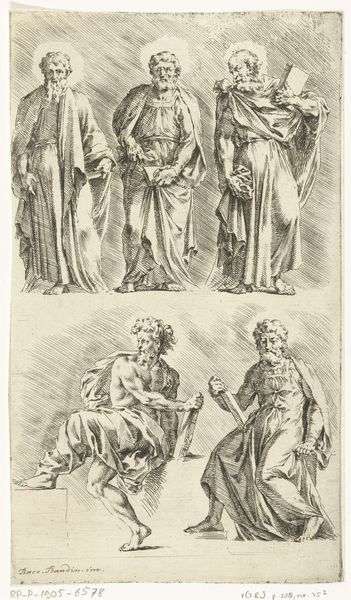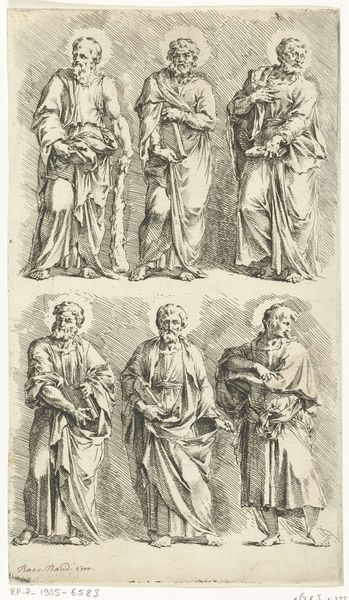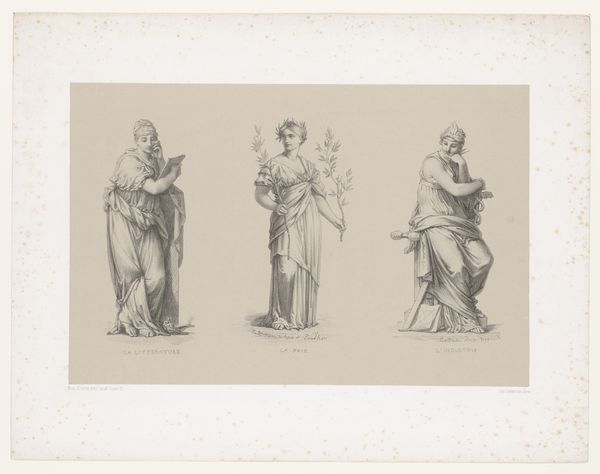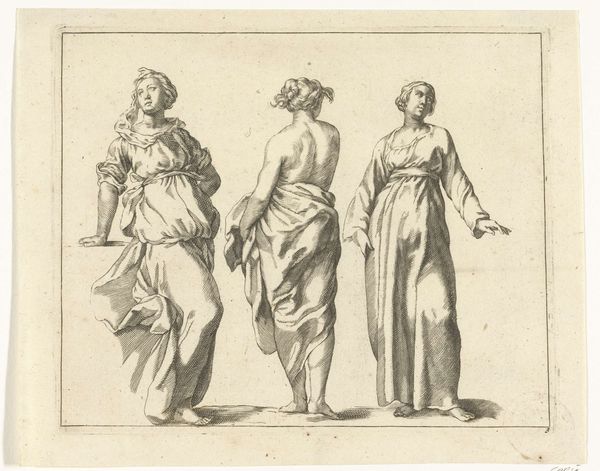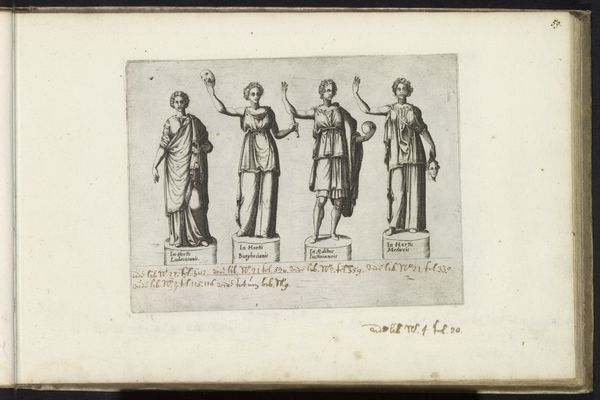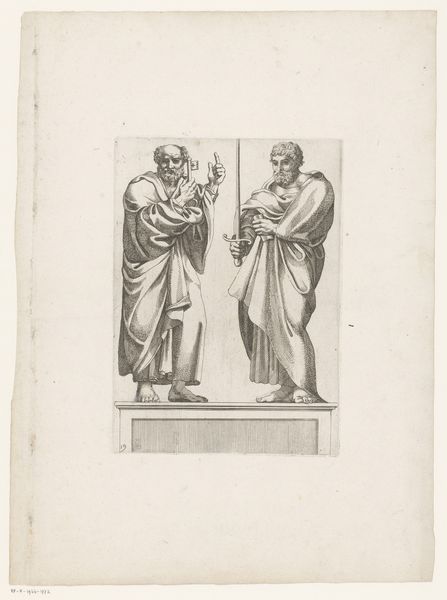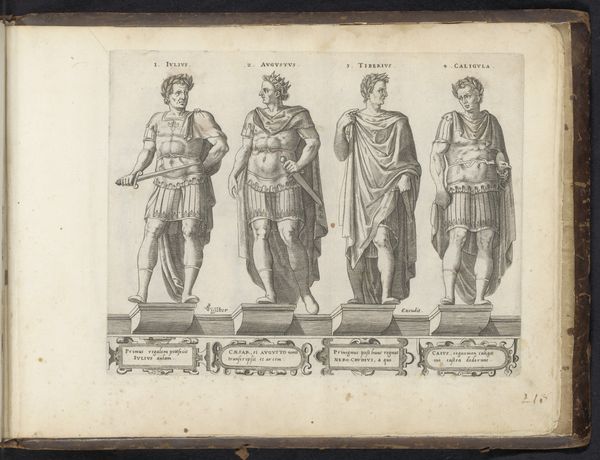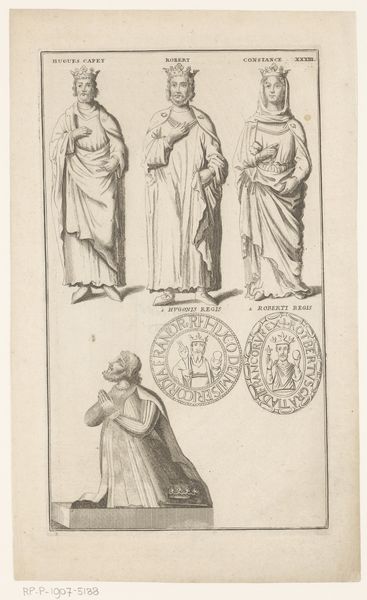
drawing, paper, ink
#
portrait
#
drawing
#
mannerism
#
figuration
#
paper
#
ink
Dimensions: height 189 mm, width 282 mm
Copyright: Rijks Museum: Open Domain
This is ‘Tekenvoorbeeld van drie staande figuren,’ made by Pieter de Jode I, likely in the late 16th or early 17th century. It’s an engraving on paper – a relatively new medium at that time. Notice the precision of the lines. Engraving requires immense skill, using a tool called a burin to carve lines into a metal plate. The plate is then inked, and the ink is transferred to paper under great pressure. This process allows for the creation of multiple identical images, a radical concept in the history of art. The three figures, draped in classical robes, are rendered with remarkable detail. Each line meticulously placed to define form and shadow. This wasn't just about aesthetics; printmaking was vital for disseminating knowledge and artistic styles. Images could be reproduced and shared widely, influencing artists and artisans across Europe. Think of it as a proto-industrial method of art production, with implications for the labor involved, and the wider economy of images. Ultimately, this print speaks to a moment of significant change, where traditional artistry met emerging technologies, forever altering the landscape of art and visual culture.
Comments
No comments
Be the first to comment and join the conversation on the ultimate creative platform.
